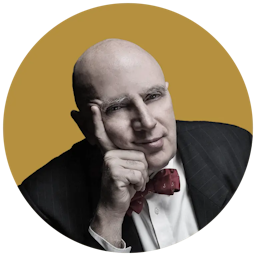At 88, Jones Has His Touch
This article is from the archive of The New York Sun before the launch of its new website in 2022. The Sun has neither altered nor updated such articles but will seek to correct any errors, mis-categorizations or other problems introduced during transfer.

For a horn player, the lips and the mouth do 90% of the work. One can learn the basic fingering of the saxophone, in particular, with a couple of lessons, but mastering the breath control and embouchure to produce the right notes takes a lifetime. Sigurd Rascher, the great classical saxophonist and teacher, even demonstrated that all the notes could be played with just the mouth alone on a special instrument that had no valves or keys.
That’s why when we talk about the great saxists, we normally talk about their distinctive tone, but when we talk about great pianists, we talk about touch. Since there’s no breath involved, every pianist could theoretically sound like every other pianist. The way Ben Webster played E flat sounds immediately different from the way Stan Getz played it, but a single note from Erroll Garner isn’t necessary different from the same note, in and of itself, as played by Dick Hyman. It’s the way that these musicians organize the individual notes into group, the context in which they place them, that makes each great keyboardist unique.
I know of no better way to demonstrate the concepts of “touch” and “tone,” both in and of themselves and how they interact with each other, than with the remarkable music made by the pianist Hank Jones and the tenor saxophonist Joe Lovano. The two have a new album out, their third together but first set of duets, “Kids: Duets Live at Dizzy’s Club Coca-Cola” (Blue Note), and to mark the occasion, they are appearing this week both together and separately (Mr. Jones appeared last night) at the same club where the album was recorded a year ago.
Go ask nine out of 10 jazz buffs to name the greatest living pianist; if they don’t say Hank Jones, then they have some more listening to do. Mr. Jones, who will turn 89 in July, has enjoyed a career that spans practically the entire history of the music: He was already playing (though not very well, he insists) at the start of the swing era in the mid-1930s, and, by the time of the birth of modern jazz a decade later, he was well established as a veteran master. There is virtually no major musician he hasn’t worked with at some level, no area of the music he has not explored, no part of the jazz experience he hasn’t lived first hand. More than just about anyone else in the history of jazz, Mr. Jones has done most of his best work in the later part of his career, his 60s, 70s, and 80s. His appearances at Dizzy’s are his first performances since undergoing triple-bypass surgery several months ago.
Mr. Jones is well known as the firstborn and last surviving member of the most celebrated family in jazz, which included his younger brothers Thad (cornetist and composer) and Elvin (drummer), bandleaders both. Mr. Jones’s 2005 album, “For My Father” was steeped in the memory of his family — not only the Joneses’ actual father, but fathers in a religious sense, as in the reverential “For the Grace of God,” and in terms of musical inspiration, as in the works of Duke Ellington, Billy Strayhorn, and Thelonious Monk. The album, along with Mr. Jones’s 2006 recording, “Hank and Frank” (with the tenor saxist Frank Wess, one of the few great horn players of Mr. Jones’s approximate generation who is still performing at his peak), offered brilliant samples of Mr. Jones’s amazingly lucid, sparkling touch.
The new album, “Kids,” is a perfect illustration of touch and tone interacting. I caught several of the sets at Dizzy’s last April, when the album was taped, but unfortunately I missed the standout track of the set, “Lazy Afternoon.” Yet I can well imagine that the crowd and the wait staff were as quiet as John La-Touche’s lyric describes: “If you hold my hand and sit real still / You can hear the grass as it grows.”
Playing soprano saxophone rather than his customary tenor, Mr. Lovano offers the melody with an even more vocalized intonation than usual; he colors every pitch with the force and feeling of a great singer, and there’s nary a note played on his saxophone that you could confuse with one by anyone else.
In his solo spot, Mr. Jones runs light embellishments around the tune, dazzling the listener but never breaking the lazy mood. His touch at the keyboard is as perfect as piano playing can be. “Lazy Afternoon,” the only remembered remnant of the 1954 flop show “The Golden Apple,” is meant to convey a sultry, languid mood; nature abhors a vacuum, and when nothing else is happening, there’s a window of opportunity for amorous activity. Mr. Lovano’s first chorus is relaxed, though hardly lethargic, and he is obviously jazzed by Mr. Jones’s statement, because he conveys even more restrained passion and depth of feeling on his out-chorus: erotic but somehow mournful, not only enjoying the moment, but, in a sense, looking back on it from some future time. Mr. Jones’s keyboard work is perhaps even more perfect underneath Mr. Lovano’s playing, and the two transform the song into a romantic reflection on lazy afternoons past and present.
As a musician, of course, Mr. Jones has been anything but lazy, but I would hope that he’s enjoyed his share of lazy afternoons in his 89 years — so far — with us. Here’s to many more.
Messrs. Jones and Lovano will perform Friday through Sunday at Dizzy’s Club Coca-Cola, Rose Hall, Jazz at Lincoln Center, Broadway at 60th Street, 212-258-9595).

